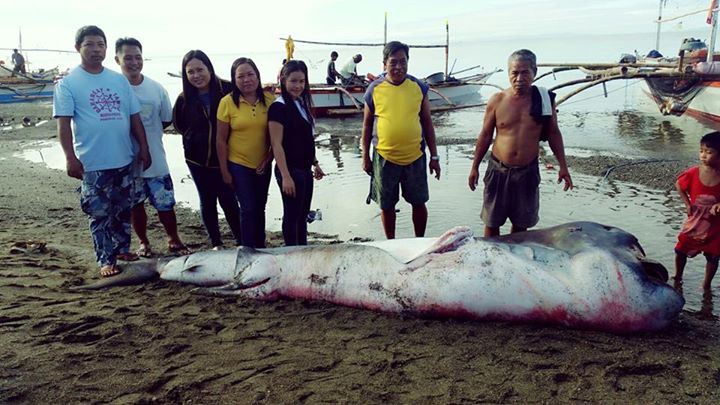Extremely rare 15ft megamouth shark washes ashore in Philippines
The cause of death of the megamouth is not known yet, per local media reports.
An extremely rare 15ft megamouth shark washed ashore in a village in the Philippines. It was discovered dead by fishermen in the remote area of Gubat in Sorsogon province.
The photos of the fish were first posted by Bureau of Fisheries and Aquatic Resources (BFAR) spokesperson Nonie Enolva on June 11 on Facebook. The officials of BFAR are not yet aware of the cause of its death.
However, a spokesperson for the organisation revealed that the shark could have become tangled in a fishing net. "We want to preserve it for museum material," BFAR spokesperson Nonie Enolva told The Manila Times.
Extremely rare megamouth shark washes up in Philippines village https://t.co/LFtbdEy0gh pic.twitter.com/6TfQIMboYp
— New York Post (@nypost) June 20, 2022
"We want to know and verify the cause of death of the megamouth shark. We want to preserve it either through taxidermy or submerge it through preservation solutions," he added.
With its huge bulbous head and 50 rows of teeth, the bizarre-looking shark was first discovered in 1976 by a US Navy research vehicle in Hawaiian waters. Megamouths swim at a depth of about 200m in the day, then about 20m at night – typical foraging behaviour.
According to the non-profit Marine Wildlife Watch of the Philippines, there have been around 100 sightings of the shark in the Philippines. Most of its sightings have been reported from Taiwan, per a report in The Independent.
Megamouth sharks, or Megachasma pelagios, come from the Lamniformes order of sharks commonly known as mackerel sharks, which include the great white shark. They are dark gray-brown on top and light gray to white below.
Megamouths are the third known species of planktonivorous shark, the other two being the whale shark and basking shark. Their diet mainly consists of plankton, small shrimps and jellyfish.
While they mainly live deep in the ocean, they come to the surface to feed at night. Megamouths have been caught off the coasts of Senegal, South Africa, Brazil, Indonesia, the Philippines, Thailand and California.























